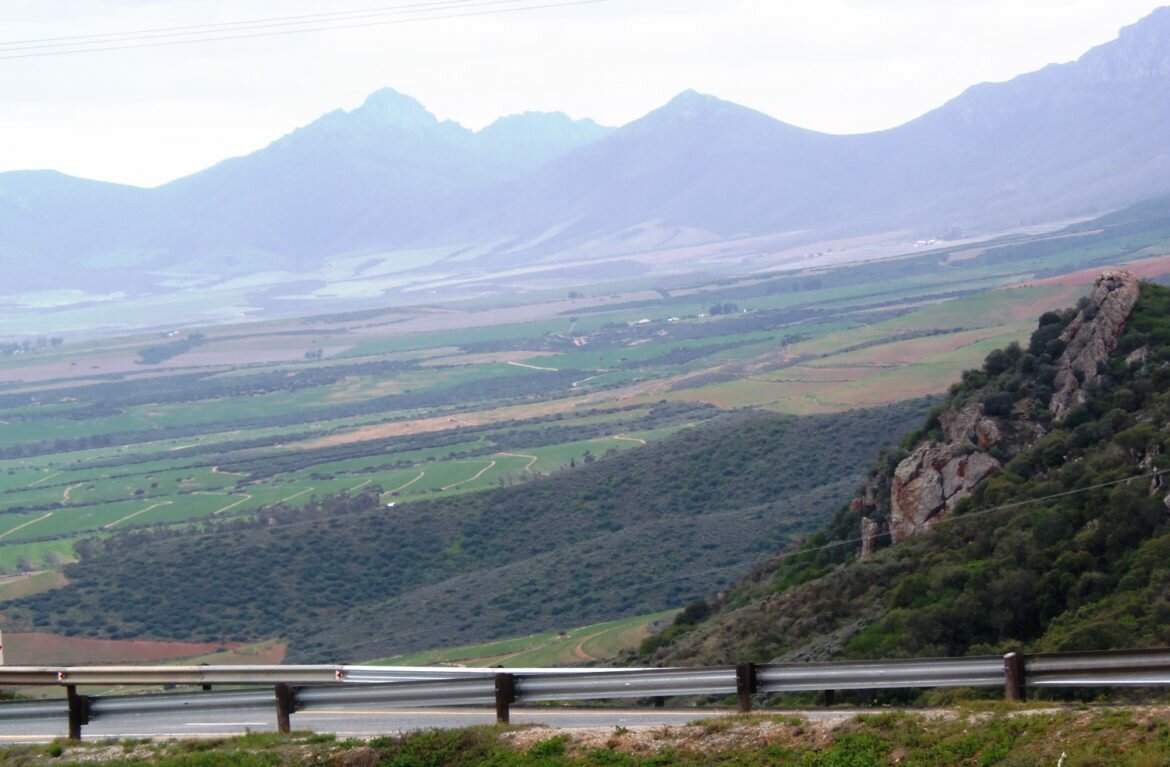
Early one wintry day all involved with IMAGINEMAG, set off to visit the Western Cape town, of Citrusdal. A name that evokes the fruit that grows there. It is in fact one of the largest citrus growing areas in the country.
Leaving Cape Town, turning onto the N7 one drives smoothly on the straight, then up hill and down dale with constant views of distant mountain ranges and nearby hills all coloured in many shades of grey/blue and light purple. As the kilometers added up, small towns passed by surrounded by farming activities and with interest to tourists and local visitors.
Malmesbury named after the Earl of Malmesbury father in law of Sir Lowry Cole, Governor during the second British occupation of the Cape,1828-1838; Piquetberg/Piketberg suggests a military outpost; Mooreesberg after the minister of the Nederduitse Gereformeerde Kerk, JC le Febre Moorrees. All three have, on different occasions, been visited including the attractive surrounding countryside.
Approaching Citrusdal travellers view, from the height of the dramatic and curvaceous Piquinierskloof Pass/ Piekenierskloof Pass, the magnificent panorama below stretching far into the distance. The word piquiniers suggests ‘pike men’ keepers of the law. The pass was built by Thomas Bain and opened in 1858 and was then known as Grey’s Pass. It was upgraded and re-opened in 1958 and now known by the newer name. Turning off the N7 to the town one becomes part of a very long Main Road with shops, stores plus various facilities of a small but modern town.

Citrusdal Museum
A specific reason for being there was to visit the Citrusdal Museum. ImagineMag has published work of some of the museums in the Western Cape. From a heritage point of view one can learn, by visiting musems some of the history of an area . We received a warm welcome from the staff of the museum: Jolanda and Juan-dre and Georgia of the tourist information office.
The attractive stone built museum was once a church and has been well maintained. It is surrounded by flower beds and a grassed area with tall trees. Walking around the inside one sees kitchen implements of the past, clothing, old photo prints, Victorian bedroom furniture, pharmacy items etc.
A few metres away from the museum and on the same block is a 1983 ”reproduction” of an old Strandveld huisie. This is the arts and culture centre and certainly from the road it is a bright and eye catching building. It also houses a coffee shop.
We enjoyed our visit and wish the centre and the museum well for the future.
